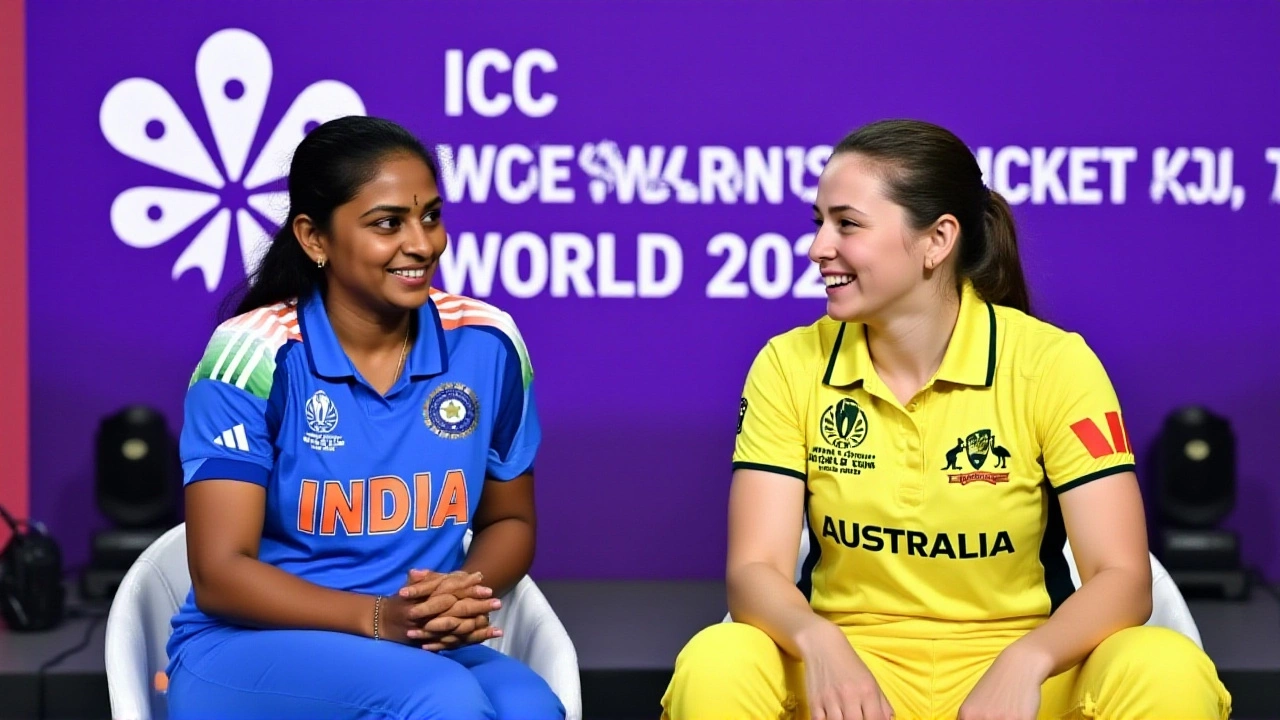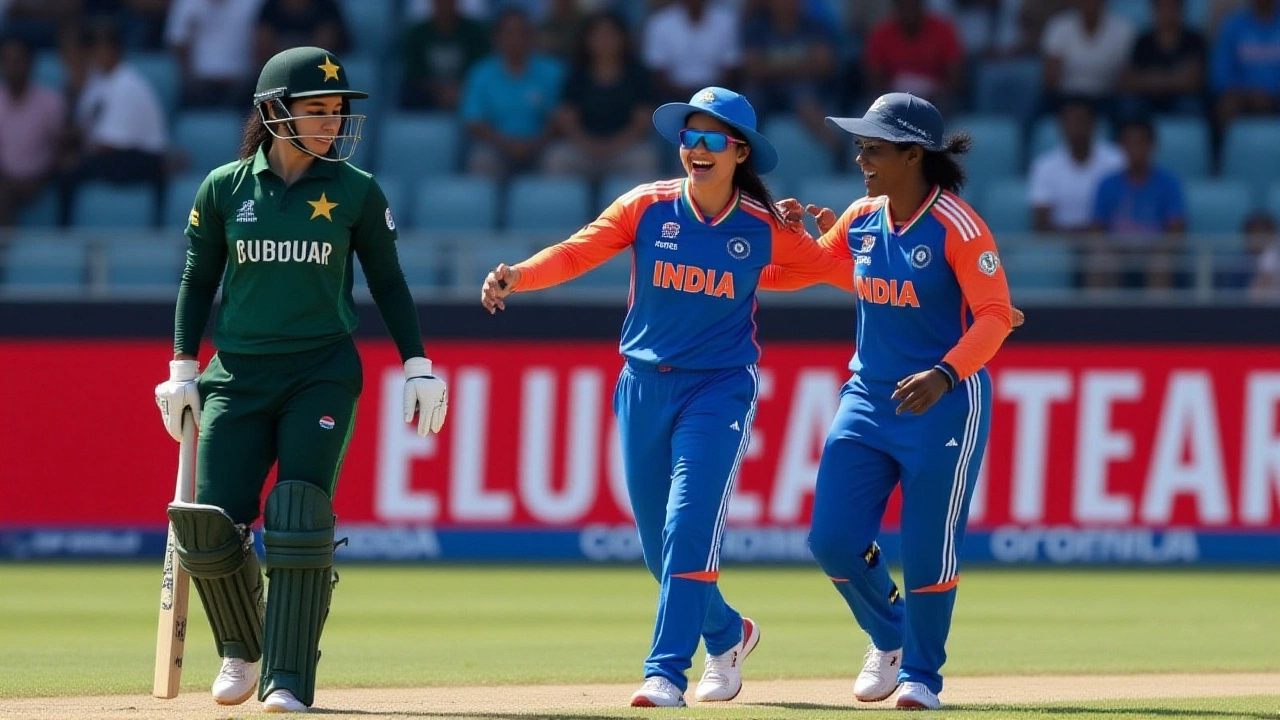When Harmanpreet Kaur, captain of India women's cricket team marched onto the field at R. Premadasa Stadium in Colombo on October 5, 2025, the atmosphere was electric. The Women’s World Cup showdown against Pakistan turned into a masterclass in both batting grit and bowling firepower, ending in an 88‑run victory that sent the crowd into a roar.
Historical context of India‑Pakistan women’s clashes
These two sides have met three times in the past month – twice in bilateral series and once in the ICC Women's World Cup 2025. Historically, the encounters have been tightly contested, but the recent "handshake‑gate" saga has added a sour note to the rivalry. That controversy erupted after a disputed finish in their last bilateral match, leaving fans and officials fuming and setting the stage for a high‑stakes clash in Colombo.
India’s innings: 247 all out in 50 overs
Opening the batting, Smriti Mandhana anchored the start with a stylish 68, while Deepti Sharma chipped in a quick‑fire 55. The middle order saw Renuka Singh contribute a vital 42 before falling to a sharp edge.
When the innings rolled into the final over, wicket‑keeper Richa Ghosh pulled off a cheeky reverse scoop for four, exploiting a field set that was all inside the circle on the off‑side. A brief mix‑up at point, where both the keeper and the fielder lunged for the same ball, resulted in a dropped catch, but the damage was already done – India were set at 247/10.
Pakistan’s chase stalls at 81/3
Pakistan began their pursuit confidently, reaching 81 for three after 24 overs. However, the required run‑rate began to climb, and India’s bowlers, especially the swing‑loving Diana Baig, who claimed four wickets for 28 runs, kept the pressure on.
Renuka Singh’s disciplined line in the death overs snatched the final two wickets, bundling out Pakistan for 159. The 88‑run margin was not just a number – it was a statement that India’s combined firepower could dominate even a side that had given them a run‑away in previous meetings.
Reactions from the players and analysts
After the match, Kaur said, "We stick to our game plan, stay patient, and let the bowlers do the work. The crowd in Colombo made it special." She praised Ghosh’s composure under pressure, adding that the late‑innings hustle was "the X‑factor".
Pakistan’s captain, Nida Dar, expressed disappointment but remained upbeat: "We need to regroup, work on our partnerships, and take the lessons forward. The conditions here are tricky, and we’ll be better prepared for the next game."
Cricket analyst Ravi Shastri noted, "India’s batting depth this tournament is impressive. Scoring 247 against a disciplined bowling attack shows they can chase bigger totals if needed. The real story is the effectiveness of their bowlers in the middle overs; they forced Pakistan into a chase they couldn’t sustain."

Impact on the group stage and qualification picture
With the win, India now sits atop Group A with six points, while Pakistan trails with just two. The victory improves India’s net run rate significantly – a crucial metric should the group end in a points tie. Experts predict that if India wins its next two matches, they will likely secure a semi‑final berth, while Pakistan will need a win plus a heavy loss by a rival to stay alive.
The match also drew attention because of a brief, unprecedented interruption. Mid‑innings, the ground staff halted play for a fumigation‑spray to address a sudden mosquito outbreak. Though the pause lasted only five minutes, it disrupted the rhythm of both sides and sparked a flurry of social‑media memes about “cricket’s most unusual break”.
What’s next for both teams?
India’s next fixture is against England on October 9, a duel many are calling the “biggest clash of the tournament”. A win would cement their status as early favourites. Pakistan, meanwhile, faces Sri Lanka on October 8, a must‑win if they hope to keep their World Cup dreams alive.
Background: the evolution of women’s cricket in South Asia
Women’s cricket in the sub‑continent has surged over the past decade, with India climbing into the top‑three of the ICC rankings and Pakistan making steady progress. The 2025 World Cup is the first to feature a full schedule of sixteen teams, expanding opportunities for emerging nations. The heightened media focus on the India‑Pakistan rivalry, amplified by the “handshake‑gate” saga, has brought unparalleled attention to the women’s game, inspiring a new generation of players across both countries.
Frequently Asked Questions
How does this victory affect India’s World Cup qualification chances?
The win lifts India to the top of Group A with six points and boosts their net run rate, a tiebreaker the ICC uses. If they secure victories in their remaining group matches, India is virtually assured a spot in the semi‑finals.
What was the ‘handshake‑gate’ controversy about?
During a bilateral series in August, a disputed dismissal led to a heated argument between the captains, followed by a refusal to shake hands. The incident sparked debate over sportsmanship and added extra tension to this World Cup encounter.
Who were the standout performers for India?
Smriti Mandhana (68), Deepti Sharma (55), Renuka Singh (42) with the ball, and wicket‑keeper Richa Ghosh’s decisive four in the final over were key contributions. Diana Baig’s four‑wicket haul was the highlight for Pakistan.
When is India’s next World Cup match?
India faces England on October 9, 2025, at the same venue in Colombo. The clash is billed as a pivotal group‑stage showdown.
Did the fumigation interruption affect the outcome?
The five‑minute pause broke the flow of the innings, particularly for Pakistan’s chase, which had been building momentum. While the impact was brief, commentators noted it may have contributed to a loss of focus during a critical phase.





